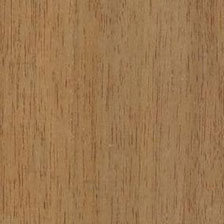Niové

Other names
M’Bonda, Kamashi, Oropa, Ekop
Scientific Name
Staudtia kamerunensis
Family
Myristicaceae
Description
The heartwood is red-brown to orange-brown with darker brown streaks. The 80-100 mm thick, light coloured sapwood merges into a light orange-yellow transitional zone which can be quite thick between the heartwood and the sapwood. Sanded heartwood has a color similar to Teak which when finished, with a clear water based polyurethane finish, highlights the rich qualities of the wood and produces a wood that resembles American black cherry in color, grain, and texture. A very attractive wood. Light sanding produces a very smooth surface. The surface is slightly lustrous and occasionally oily. One of the best woods for exterior use. Excellent weathering properties. Freshly cut, Niové has a peppery smell. This is an excellent substitute for American Black Cherry.
Density
(H=12%) : 0,89
Treatability
Not permeable
Seasoning
Kiln drying is advised. Drying needs to be slow to avoid checking and shakes. Small movement in service.
Stability
Poorly stable
Durability
Durable, resistant to decay and insect attack
Workability
Niove is fairly easy to work with hand and machine tools, despite it hardness. It can be brought to a smooth finish. Nails and screws fairly well, but pre-boring is advised to avoid spliting tendencies. Due to natural oilness, glueing can be a problem unless surface is properly prepared.Sands to a clean and smooth finish with good polishing capabilities
End-Uses
- Cabinetwork (high class furniture)
- Exterior joinery
- Interior joinery
- Stairs (inside)
- Sliced veneer
- Flooring
- Current furniture or furniture components
- Turned goods
- Seats
- Ship building (ribs)
- Ship building (planking and deck)
- Heavy carpentry
- Interior panelling
- Industrial or heavy flooring
- Exterior panelling
- Bridges (parts not in contact with water or ground)
- Vehicle or container flooring
- Hydraulic works (fresh water)
- Bridges (parts in contact with water or ground)
-
Sleepers